Rug Wash Tour
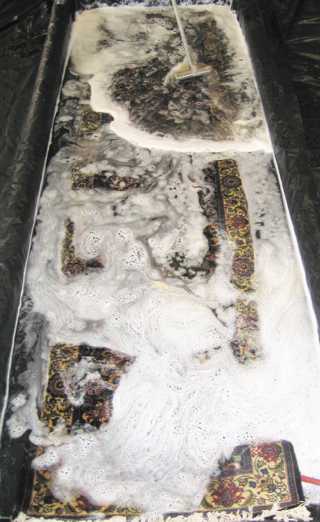
The recommended method for cleaning natural fiber rugs is a full-immersion wet wash.
Essentially, they need a really good “bath” to remove the dirt, grit, bacteria, and other contaminants from the surface and within the base of the rug’s fibers.
Rugs have been woven for thousands of years, and have been washed for thousands as well. Overseas you see both rugs and fabrics washed in rivers.
Today we simply take the Old World washing ways and bring them up to date for both antique and contemporary rugs and textiles. There are concerns that vary depending on fiber type, dye strength, and rug construction.
These are our steps taken with every rug that comes through our doors to ensure the right care for each textile to give you the most thorough cleaning process possible, while also providing the safest process for the rug itself.
Rugs, properly cared for, will outlive us many times over. We are a part of its life more than it being a part of ours. So our steps always take that into account – the welfare of the rug, and the cleanliness of it when returned to an owner’s home.
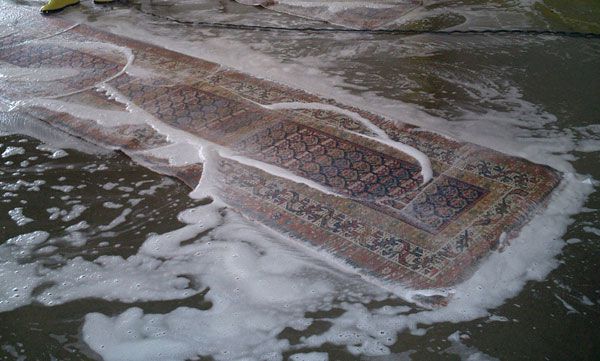
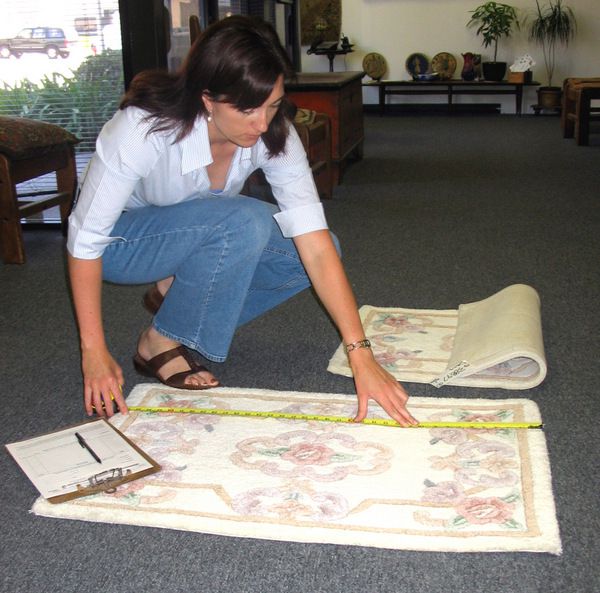
PRE-WASH INSPECTION
Each rug is inspected for any pre-existing conditions. Many times, soil covers up dye lot variations (abrash), fiber staining, prior dye bleeding, worn areas or white knots that become “uncovered” after the wash. Some of these are weaving characteristics (abrash and white knots), and others are damage that can possibly be repaired.
If you bring the rug to us personally, then this inspection takes place with you, and we will discuss any areas of concern and your options. If we transport your rug to our facility, our wash and repair teams will inspect your rug after its arrival and will contact you with any work recommendations or pre-wash “discoveries.”
ABRASH
Abrash is dye-lot color variation. All pre-dyed wool has tone changes that range from off-white to yellow to grey. When this wool is dyed a particular color, this results in a variety of shading. When one “batch” of red wool (for example) is used up in the weaving process, and the weaver grabs the next “batch” from a slightly different color base wool, this difference is woven into the rug. The result is a dye lot variation that runs side to side (left to right) and appears as “striping” in the rug.
This is a characteristic in ALL handmade natural fiber rugs, and is considered a characteristic that in many cases adds depth and texture to the overall look of the rugs (especially in natural dyed wool).
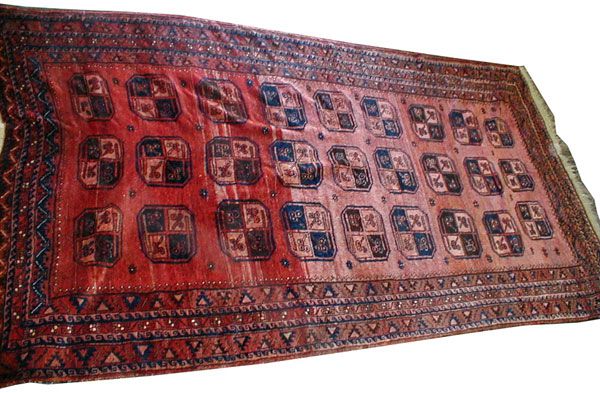
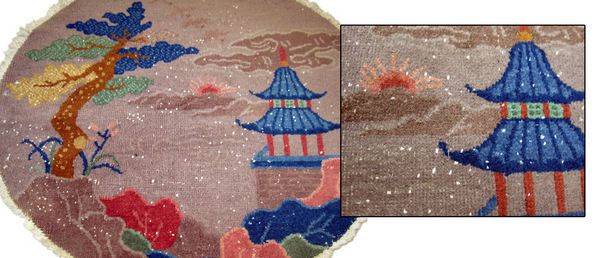
WHITE KNOTS
Most rugs have cotton foundations. Cotton warps run throughout the entire length of a rug, and cotton wefts threads run left to right – and are the means by which each row of wool knots are packed into a straight line and held in place. During the weaving and packing process, cotton warps and wefts will break. A broken warp or weft cannot be replaced, so the two broken pieces are tied in a knot and the weaving proceeds. This results in white “knots” in the field of the rug.
Most times these cotton knots are trimmed down shorter than the wool face fibers, and they are effectively “hidden” from view. Over time, wearing of the wool reveals these knots and they look like “freckles” throughout the rug. These can many times be blended away with textile dye. ALL hand woven rugs have these “rug freckles,” just some have more than others.
ASYMMETRY
Handmade textiles are rarely perfectly symmetrical. Slight design shifts in city rugs, and more noticeable design and shape variations in tribal pieces, are expected. Sometimes these can be counteracted through blocking after the wash (wet cotton foundation fibers can “give” a little – but not too much).
We see this as part of the rug’s personality. It helps make it unique.
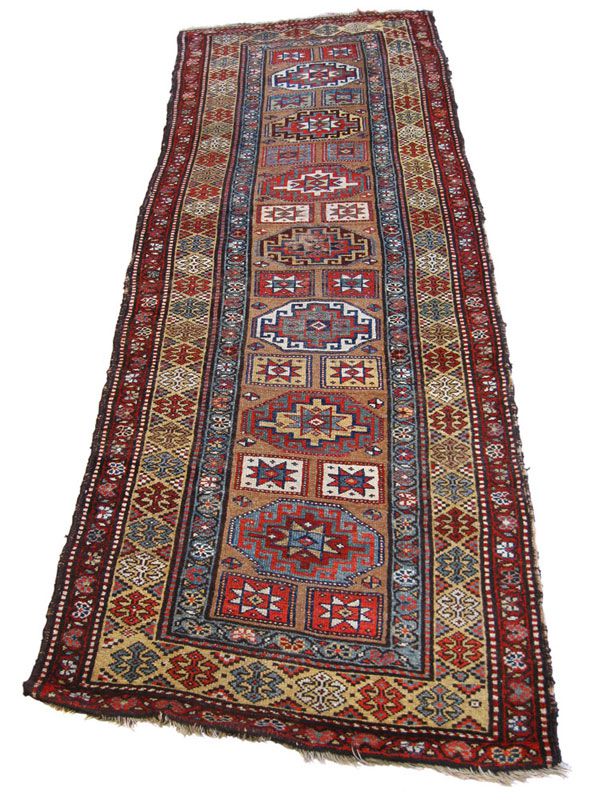
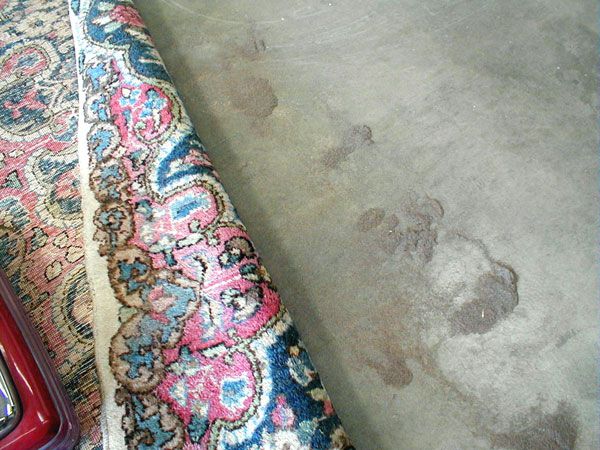
DUST
Once the pre-wash inspection is complete and the wash proceeds, the first step is dusting. Wool fibers under the microscope look like fish scales, with lots of little pockets to hide dirt, grit, and soil.
A wool rug can hold POUNDS of soil in its fibers before it begins to look dirty. So when it begins looking bad, you know it’s well past the time to have it cleaned. This is not just simple “dirt” but germs, bacteria, and other contaminants brought in by feet, shoes, and paws.
Flooding a rug with pounds of fine grit and dirt in the foundation creates mud. This is why a rug needs to be dusted before it gets wet.
This is performed with an upright vacuum cleaner, or oth
FULL-IMMERSION WET WASH
The dyes of your rug are tested for colorfastness. If the dyes are not colorfast, then the rug is bathed first in vinegar to stbailize the dyes during the wash process. (This is similar to when your grandmother used to add white vinegar to her wash water when handling new fabrics, to help keep the dyes from migrating into the neighboring areas.)
The rug is washed using mild rug shampoo and cool water. Just like you would with your wool or cotton sweater, you avoid hot water, harsh detergents, and high heat.
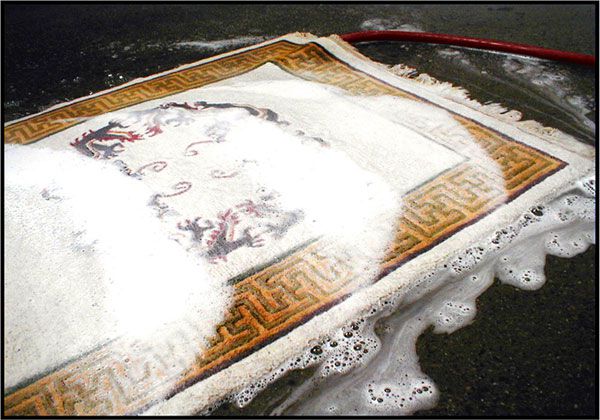
DRY FLAT
All of our rugs are laid out flat to dry. Hanging textiles up when wet can lead to too much strain on the foundation of the rugs. Air movers are used to help facilitate drying, and dehumidifiers help control the drying environment.
By not using hot water during washing, or high heat in drying, you avoid the worry of shrinking. Again, these fibers are similar to your nicer wool and cotton fabrics, so a gentle wash and “dry out flat” is how they have been washed for ages. But, as with your brand new clothing items, there may be a very slight shrinking for its very first cleaning of perhaps an inch, but after the first wash that is no longer a concern (unless of course the rug is improperly cleaned with high heat carpet cleaning machines in your home, which can shrink, misshapen, bleed, and harm your rugs…this is why rugs are never cleaned in the home, but taken out for their wash in a rug cleaning facility).
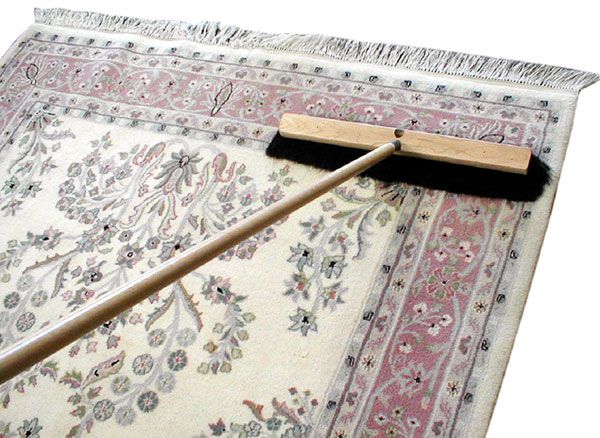
FRINGE WORK AND FINISHING
Fringe tassels are usually cotton strands. These are the “warps” of a rug, and literally are the foundation threads that the fuzzy wool knots are tied around to weave your rug.
Cotton is an absorbent fiber, and has no place to “hide” soil like wool does, so when your tassels look dirty you know it’s time to wash your rug. And these tassels need some extra scrubbing and elbow grease to get clean. (Think of your kids shoelaces, and you can get a feel for how hard it can be to get them “clean” when they are heavily soiled. We grew up playing baseball and softball in our family, so we are EXPERTS at heavily soiled shoelaces!)
Fringe tassels are scrubbed during the wash process, and additionally when needed. The rug after being thoroughly dried (we have moisture sensors that tell us when it is 100% dry) is then given a final grooming with a horsehair brush, and then rolled and ready to go home.
“How Often Should I Wash My Rugs?”
Rugs under normal use should be washed every 18-24 months, with vacuuming (of the top side) every other week.
If you have an entry rug, rug with high traffic, or rugs in rooms with kids and pets, you will want to wash them annually. Rugs and fabrics act as “air filters” in rooms, they grab airborne dust and contaminants and hold them in their fibers. But when the filter gets FULL of items brought in by feet, shoes, paws, and windy weather, every step creates a puff of the unmentionables back into the air. They need regular cleaning to keep the indoor environment cleaner.
Even rugs hanging on the walls get dirty with dust. And, bugs will be more interested in your hanging rugs than your floor-bound ones because they like dark, undisturbed places to make a home and meal. So hanging textiles should be dusted quarterly with an upholstery attachment, to suck away the dust and to irritate the bugs to go elsewhere.
For steps on proper vacuuming techniques, proper hanging recommendations, proper storage steps, and the use of the right pads, visit our “RUG CARE TIPS”
For information on rug repairs, visit our “RUG REPAIR TOUR”
For other questions and to schedule a visit to our Rug Plant, give us a call at 858-566-3833.
